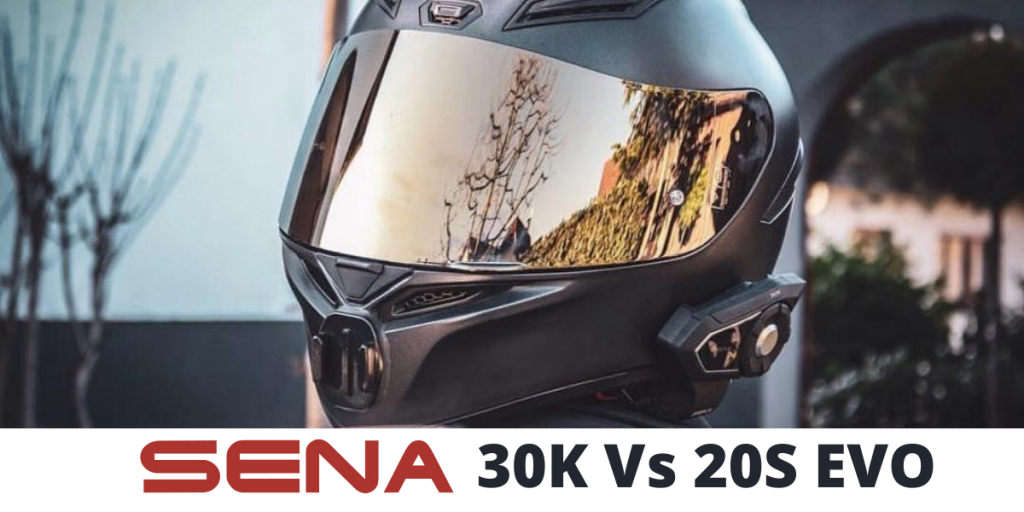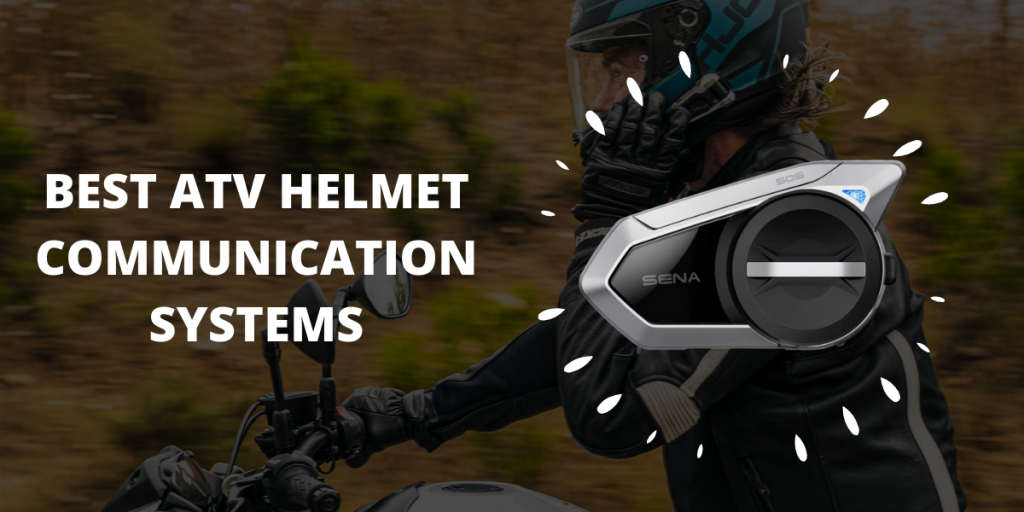Introduction: The Battle of Bluetooth Giants
When it comes to motorcycle communication systems, two names dominate every conversation: Sena and Cardo. Riders searching for a reliable headset inevitably face the same question — Sena vs Cardo: which is better?
Both brands have established themselves as industry leaders, offering robust connectivity, crystal-clear audio, and innovative safety features. But choosing the right system isn’t as simple as picking the one with the most features. Your riding style, group size, and budget all play a role.
In this comparison, we’ll break down Sena and Cardo across every important category: compatibility, mesh networking, audio quality, safety, voice commands, battery life, ergonomics, and price. We’ll also bring in real rider experiences from Reddit, forums, and industry reviews so you’re not just reading specs — you’re hearing what actually works on the road.
👉 Quick note before we dive in: if you’re already leaning toward one brand, check out the latest deals here:
Cardo Packtalk Bold
Best Overall
- The Cardo Packtalk Bold Comes with DMC technology that allows you to connect with upto 15 riders.
- JBL speakers provide exceptional audio
- IP67 Waterproofing
- Upto 5 Miles operating distance










Compatibility: Can Sena and Cardo Work Together?
One of the most common concerns riders have is whether Sena and Cardo devices can communicate with each other. The short answer is yes — but with limitations.
Universal Pairing: Both Sena and Cardo advertise “universal pairing,” which means they can connect to other Bluetooth intercom brands. In practice, this usually works, but the connection can be less stable compared to same-brand pairing.
Group Limitations: If you ride in a large group where most people are on the same brand, mixing Cardo and Sena can get messy. For example, Sena’s Mesh 2.0 system is seamless with other Sena devices, while Cardo’s Dynamic Mesh Communication (DMC) thrives in Cardo-only groups. Cross-brand connections usually revert to basic Bluetooth pairing.
Phone and GPS Pairing: Both brands easily connect to smartphones, GPS units, and music players. If your priority is rider-to-passenger or phone-to-rider communication, cross-brand compatibility is less of an issue.
“As of 2023, connecting across brands is now almost as easy as connecting same-brand units. I’ve personally connected my Cardo Packtalk Pro and Sena 50S units without any problems.” — Motorcycle News
Verdict on Compatibility:
For small groups or rider-passenger setups, both Sena and Cardo can pair with each other without much hassle.
For larger group rides, it’s best to stick with a single ecosystem — Sena with Sena, Cardo with Cardo — to avoid connection drops.

Mesh & Connectivity: Staying Linked on the Road
Here’s where the two brands really set themselves apart.
Sena Mesh 2.0
Sena’s Mesh 2.0 system creates an “open” communication channel where riders can join or leave without breaking the connection. It’s ideal for groups that change frequently, such as weekend ride-outs.
Range: Up to 5 miles (8 km) with multiple riders.
Group Size: Can handle 24+ riders in public mode.
Stability: Mesh automatically reconfigures when someone drops out or rejoins.
For a closer look at Sena’s features, you can also check our Sena 50S Bluetooth Intercom review or Sena 30K Bluetooth Intercom review.
Cardo Dynamic Mesh Communication (DMC)
Cardo’s DMC is widely praised for its stability and ease of use. Unlike Bluetooth chains, each rider connects independently to the mesh, so losing one rider doesn’t break the link.
Range: Around 1.6 km (1 mile) between riders, expandable with relays.
Group Size: Up to 15 riders in a single group.
Flexibility: Riders can split into subgroups without losing overall communication.
Curious how Cardo models compare? Read our Cardo Freecom 4+ Review 2025 and Cardo Packtalk Bold vs Slim Review for detailed insights.
Real-World Differences
Sena’s Mesh 2.0 is great for very large groups, especially touring clubs or organized rides.
Cardo’s DMC is often considered more reliable in mid-sized groups (5–10 riders), with smoother reconnections and fewer dropouts.
Verdict on Mesh & Connectivity:
Choose Sena if you often ride in big groups and want maximum scalability.
Choose Cardo if you value rock-solid connectivity and easy group management.
Audio Quality: Rock Concert or Radio Static?
Clear communication is the whole point of buying a headset, and this is where Cardo has a strong edge.
Cardo: Most premium models (like the Packtalk Edge) come with JBL speakers, and the difference is noticeable. Music is richer, bass hits harder, and conversations cut through wind noise even at highway speeds. Many riders say switching to Cardo feels like upgrading from stock earbuds to high-end headphones.
Sena: Audio has improved in the latest models, especially with the Harman Kardon speaker partnership in devices like the Sena 50S. But older Sena units tend to sound flatter, with weaker low-end performance.
“The Cardo is very loud and super clear with my earpeace ear plugs in. The hand controls are also a lot better.” — Reddit user, r/motorcycle
Curious about other Cardo models? Check our Cardo Freecom 4+ Review 2025 and Cardo Packtalk Bold vs Slim Review for a detailed comparison.
“Any Cardo. They seem to have like 40% more volume than all the Sena’s I’ve tried.” — Reddit user, r/motorcycles
For an in-depth look at Sena’s lineup, see our Sena 50S Bluetooth Intercom review or Sena 30K Bluetooth Intercom review.
Verdict on Audio:
Cardo wins for music lovers and highway riders who want premium sound.
Sena is catching up, but if audio is your top priority, Cardo still has the advantage.
Safety Features: More Than Just Communication
Motorcycle headsets aren’t just for chatting — they can add another layer of safety.
Cardo: Premium models like the Packtalk PRO and Packtalk Edge come with crash detection, which can alert emergency contacts via the Cardo Connect app if a crash is detected. This is especially useful for solo riders seeking extra security.
Sena: While Sena offers advanced features such as Mesh 3.0 intercom technology, Harman Kardon audio, and voice commands, it does not provide crash detection in any of its standard headsets.
“Crash detection gives me peace of mind when riding solo long distances.” — Forum rider
Verdict on Safety:
Cardo is the better choice if crash detection and emergency alerts are important.
Sena excels in connectivity and audio, but does not offer crash detection.
Voice Commands: Hands-Free Convenience
Both brands offer voice-activated controls, but the experience isn’t identical.
Cardo: Supports “Hey Cardo” voice commands. Riders report that it recognizes accents well and responds quickly, even in strong wind. Commands like “Hey Cardo, music on” or “Hey Cardo, next track” feel smooth and natural.
Sena: Has voice control too, but it’s less refined. You often need exact phrasing, and wind noise can throw it off.
“Cardo is bit more preferred because of its natural voice tone and base.” — Hayabusa.org forum
Verdict on Voice Commands:
Cardo leads with smoother, natural voice interaction.
Sena works, but is less forgiving.
Battery Life: Will It Last the Whole Ride?
No one wants their headset dying mid-ride.
Cardo: Excellent battery life — up to 13 hours of talk time, with fast charging (20 minutes = ~2 hours of use).
Sena: Also strong, averaging 12–14 hours depending on model. Newer units include USB-C charging, which is convenient if you’re already charging phones and cameras.
In practice, both last a full day of riding with no trouble.
Verdict on Battery:
Tie. Both brands deliver long-lasting performance with quick top-ups.
Mounting & Ergonomics: How They Feel on Your Helmet
The best headset is one you can use effortlessly with gloves on.
Cardo: The Packtalk Edge uses a magnetic mount, making it super easy to snap on and off, even with one hand. Buttons are low-profile and intuitive.
Sena: Sticks with clip or adhesive mounts — reliable, but less convenient. Buttons are bigger and more tactile, which some riders actually prefer with thick gloves.
Verdict on Ergonomics:
Cardo = sleek design and modern magnetic mounting.
Sena = bulkier but very glove-friendly.
Price & Value: What Do You Really Pay For?
Motorcycle headsets aren’t cheap, but it’s important to weigh features against long-term value.
Cardo: Premium models like the Packtalk Edge retail around $389–$399. While pricey, you’re paying for JBL sound, mesh reliability, and refined voice commands. Even the mid-tier Freecom series delivers strong performance at a lower cost (~$200–$250).
Sena: The Sena 50S and 50R are in the same price bracket (~$350–$370). You’re getting advanced safety features like crash detection, plus options like built-in cameras on some models (e.g., Sena 50C), which Cardo doesn’t offer.
Verdict on Value:
Cardo: Best for riders prioritizing sound and user-friendliness.
Sena: Best for tech lovers who want extras like cameras or safety alerts.
Cardo PACKTALK BLACK (Special Edition)

What Riders Are Saying (Real-World Insights)
Specs only tell half the story — rider experiences often reveal what brochures don’t.
“Any Cardo. They seem to have like 40% more volume than all the Sena’s I’ve tried.” — r/motorcycles
“The Cardo is very loud and super clear with my earpeace ear plugs in. The hand controls are also a lot better.” — r/motorcycles
“Cardo is a bit more preferred because of its natural voice tone and base.” — Hayabusa.org forum
Consensus:
Riders praise Cardo’s sound and user-friendly design.
Sena earns respect for safety features and durability.
Final Verdict: Which One Should You Buy?
If you’re still torn, here’s the quick breakdown:
Choose Cardo if…
You care about music quality and voice commands.
You want a modern, sleek design with magnetic mounts.
Group rides are your thing (Cardo’s Dynamic Mesh Communication is the gold standard).
Choose Sena if…
You want tech extras like crash detection or built-in cameras.
You don’t mind a slightly clunkier interface in exchange for more features.
You ride solo often and want added safety reassurance.
FAQs on Sena vs. Cardo
1. Can Sena and Cardo headsets connect with each other?
Yes — both brands support Universal Intercom, but pairing can be tricky. Expect limited features and occasional drops.
2. Do these headsets work with phone apps like Google Maps and Spotify?
Absolutely. Both Sena and Cardo connect to your smartphone via Bluetooth for music, navigation, and calls.
3. Which headset lasts longer in the long run?
Both are durable, but Cardo units tend to age better due to fewer firmware issues, according to rider reports.
4. Is the price difference worth it?
If audio and ease of use matter most → Cardo.
If advanced features and safety are a priority → Sena.
5. Where can I find other top intercom options?
For a full list, see our guide to the 10 Best Motorcycle Intercom Systems in 2025.





I have purchased the shoei gt air 2. I know it is built for the sena com system. My question is compatibility, the group I’ll be riding with all have the cardo bold. Will I’ll be able to communicate to the rest of the group as if on a bold? As I have not purchased a com system is it better to mount glue a cardo bold to the side
Yes Rich, You will be able to talk to your buddies using the Packtalk Bold as both Sena and Cardo are built to work with each other.
Enjoy Your Ride!
I have a question regarding the comm systems. I bought a shoei Gt air 2 which is set for the sena comm. Everyone in my group of 8 all have the cardo bold. Would you try and glue a cardo pak on the shoei to make it work or would you instal the sena. My understanding is I’ll always have to rejoin each member every ride as well as if fall out of range. Wondering your thoughts. New to riding as well as this communication stuff, any insight would be appreciated.
I have seen people mounting Cardo Bold on Shoei Neotec 2, which is similar to the GT Air 2.
So yes, In my opinion, you should be able to mount the Packtalk Bold on your GT Air 2.